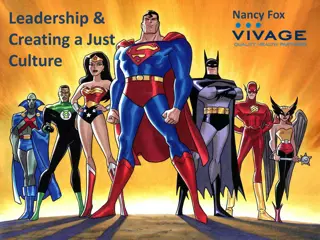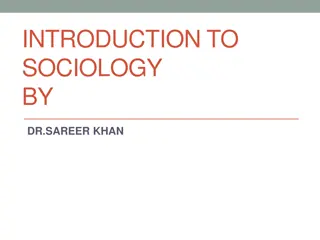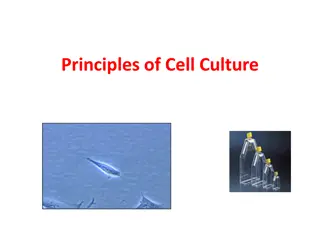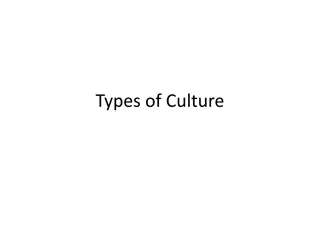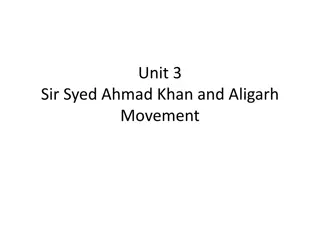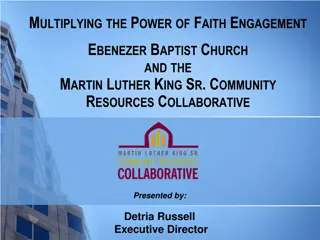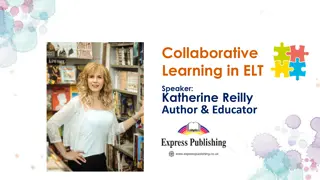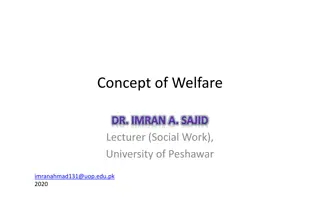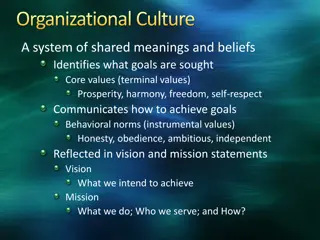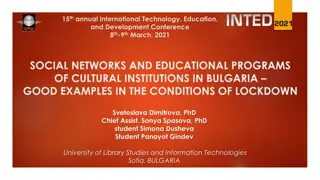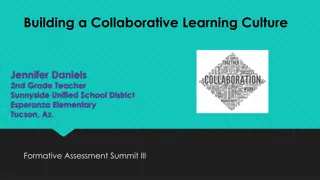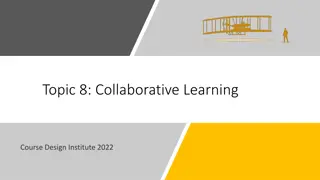Fostering Collaborative Culture in Educational Institutions
Fostering a collaborative culture through the development of high-performing teams is essential for successful school improvement initiatives. School leadership teams play a crucial role in uniting and coordinating collective efforts across grade levels, departments, and subjects. Educators are collectively responsible for ensuring high levels of learning for every student, emphasizing the importance of teamwork over individual efforts.
Download Presentation

Please find below an Image/Link to download the presentation.
The content on the website is provided AS IS for your information and personal use only. It may not be sold, licensed, or shared on other websites without obtaining consent from the author. Download presentation by click this link. If you encounter any issues during the download, it is possible that the publisher has removed the file from their server.
E N D
Presentation Transcript
2016-2017 Cortland Enlarged City School District
2016-2017 Our Continuous Improvement Journey
2016-2017 Effective Collaboration: Teams and What Teams Do
We can achieve our fundamental purpose of high levels of learning for all students only if we work together. We cultivate a collaborative culture through the development of high-performing teams. -DuFour, DuFour & Eaker. (2008). Revisiting Professional Learning Communities at Work
Creating a collaborative culture is the single most important factor for successful school improvement initiatives and the first order of business for those seeking to enhance the effectiveness of their schools. -Eastwood & Lewis. (2002). Restructuring that lasts: Managing the performance gap. Journal of School Leadership.
Collective Responsibility Two fundamental beliefs: 1. We, as educators, accept responsibility to ensure high levels of learning for every child 2. We assume all student can learn at high levels
Teams Teams, not individual teachers, are the key to student learning. School Intervention Team School Leadership Team Teacher Teams
School Intervention Team School Leadership Team Teacher Teams
The school leadership team serves as the guiding coalition for the school. Their primary responsibility is to unite and coordinate the school s collective efforts across grade levels, departments, and subjects. School Intervention Team School Leadership Team Teacher Teams
School Leadership Team The school leadership is the guiding coalition for the schools.
School Leadership Team Our meta-analysis of 35 years of research indicates that school leadership has a substantial effect on student achievement... -Marzano, Waters & McNulty. (2005). School Leadership That Works: From Research to Results
School Leadership Team Leadership for change is most effective when carried out by a small team of educators with the principal, functioning as a strong, cohesive force. -Marzano. (2003). What Works in Schools: Translating Research Into Action.
School Leadership Team The leadership team must operate in such a way as to provide strong guidance while demonstrating respect for those not on the team. -Marzano. (2003). What Works in Schools: Translating Research Into Action.
School Leadership Team Effective leadership for change is characterized by specific behaviors that enhance interpersonal relationships. Included with this are the characteristics of: optimism, honesty, and consideration. -Marzano. (2003). What Works in Schools: Translating Research Into Action.
School Leadership Team Role of the leadership team: Build consensus for the school s mission of collective responsibility toward high levels of learning for all students Make the case for effective collaboration Guide the staff toward embracing collaboration as the norm Ensure the staff knows what effective collaboration around the right work is Ensure necessary conditions are in place, such as time and professional development
The intervention team focuses on specific students in need of intensive support. School Intervention Team School Leadership Team Teacher Teams
Intervention Team The school intervention team s primary purpose is to coordinate the school s efforts to meet the needs of individual students requiring intensive support: Tier 2 and 3.
Intervention Team To assemble a diverse team of experts who can address the many needs of at-risk students. Getting the right people together is the key to quality problem solving. -Buffum, Mattos & Weber (2012). Simplifying Response to Intervention: Four Essential Guiding Principles
Intervention Team Students in need of intensive support often struggle due to: Significant weaknesses or gaps in foundational skills of reading, writing, number sense. Absenteeism Behavior and/or emotional concerns
Intervention Team Team responsibilities: Determine learning needs of each student who requires intensive support Diagnose causes for non-learning Determine most appropriate interventions Frequently monitor the action plan Determine if a different course of action is necessary
Intervention Team Coordinates schoolwide human resources to best support core instruction and interventions, including: School counselor Psychologist Speech/language Special education Teacher librarian Health services Subject specialists Instructional support Paraprofessionals Administration Community resources
Collaborative teacher teams are teams comprised of educators who share curricula, and thus take collective responsibility for students learning their common essential outcomes. School Intervention Team School Leadership Team Teacher Teams
Teacher Teams Collaborative teacher teams are teams of educators who share essential student learning outcomes. These teachers work collaboratively to ensure that thier students master the essentials. Teacher teams, not individual teachers, are the key to student learning.
Teacher Teams Grade level teams (elementary level) Course and content teams (secondary level) Vertical and virtual teams for singletons Interdisciplinary skills
Teacher Teams Have frequent, scheduled collaboration time Develop and follow norms Focus on the right work
Teacher Teams Have frequent, scheduled collaboration time Scheduled Common prep time Shared classes Adjusted start and/or end times
Teacher Teams Collective commitments include: Procedural meeting expectations, such as meeting attendance, punctuality, preparedness, division of labor, and follow- through of team decisions Behavioral expectations, including how the team addresses disagreements between team members Protocols to successfully address when team norms are violated
Teacher Teams Develop and follow norms Starting and ending times Being present Talking only about the things over which they have control Leaving each meeting with clear action steps
Teacher Teams When all is said and done, the norms of a group help determine whether it functions as a high-performing team or becomes simply a loose collection of people working together. -Goleman, Boyatziz & McKee. (2002). The emotional reality of teams. Journal of Organizational Excellence.
Teacher Teams Have frequent, scheduled collaboration time Develop and follow norms Focus on the right work
Teacher Teams It is disingenuous for a school or district to claim that collaboration is essential for student learning and then not provide time for professional collaboration that is built into the work day. This is why we re working to include more common planning time.
Teacher Teams Focus on the right work: Are we willing to clearly define essential learning outcomes? Will we ensure highly effective Tier 1 instruction? Will we assess student learning and the effectiveness of instruction? Will we identify students in need of additional time and support? Will we take primary responsibility for Tier 2 supplemental interventions for students who have failed to master the essentials?
Teacher Teams TODAY Focus on the right work: Are we willing to clearly define essential learning outcomes? Will we ensure highly effective Tier 1 instruction? Will we assess student learning and the effectiveness of instruction? Will we identify students in need of additional time and support? Will we take primary responsibility for Tier 2 supplemental interventions for students who have failed to master the essentials?









